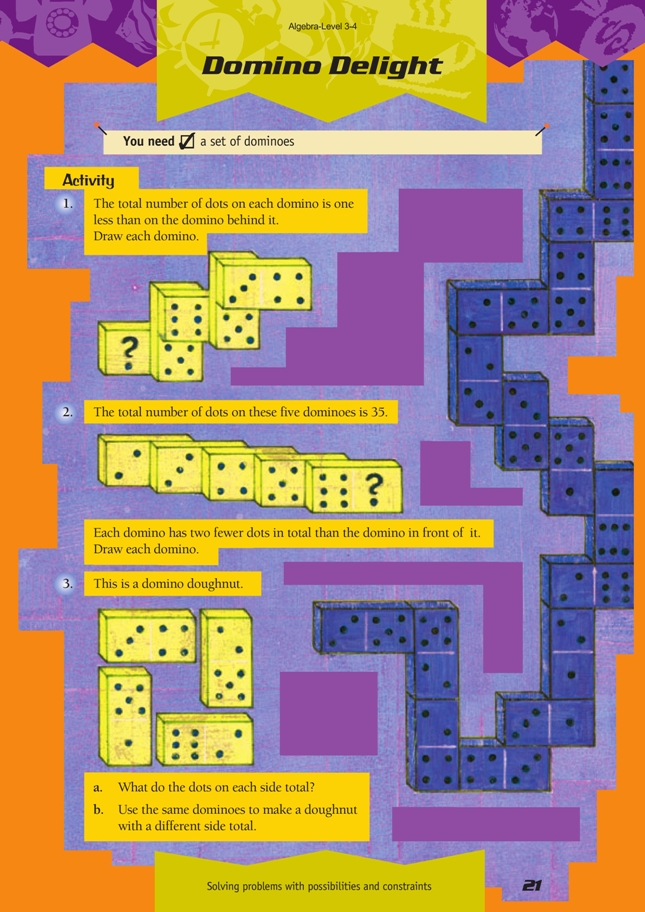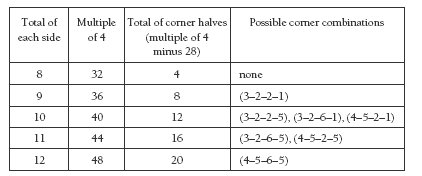This is a level 4 algebra strand activity from the Figure It Out series.
A PDF of the student activity is included.
Click on the image to enlarge it. Click again to close. Download PDF (363 KB)
sovle problems with possibilites and constraints
a set of dominoes
These problems offer possibilities and constraints. A logical way of approaching question 1 is based on the information that the total of each of the five dominoes is one less than on the one behind it. So the numbers are 7, 8, 9, 10, and 11. The last domino can only be .
The possibilities and constraints both need to be considered when describing numeric problems algebraically. Although students at this level do not need to express the problems using algebraic expressions, the problems could be represented in that way.
For example for question 1:
where a, b, c, d, and e represent the unknown numbers on the domino halves.
To find the unknown number on the covered half of the second domino:
5 + a – 1 = 7
a + 4 = 7
a = 3
So the second domino is
b = 3, so the third domino is
c = 5, so the fourth domino is
d = 11, so the total of dots on the bottom domino is 11, that is, ![]()
For question 2, let d be the total number of dots on the top domino.
We know two things:
Although this equation can be solved algebraically, students at levels 3–4 will probably look for an arithmetic method. This might be based on an idea of “average”. There are five dominoes that total 35 dots, so the average number of dots is seven. This is the number of dots on the middle domino. So the five dominoes have 3, 5, 7, 9, and 11 dots respectively. Equation i becomes ? + 6 = 11, so ? is 5.
The next domino will be 5 + ? = 9, and so on.
One way to solve domino doughnut puzzles such as the one in question 3 is to consider which halves of the dominoes could be in the corners of the doughnut.
The totals of each side must be equal, so all four sides must add to a multiple of four.
The halves marked x will be counted twice and the blank halves once.
The key to solving question b (which uses the same dominoes as the doughnut shown) is to remember that although the dominoes themselves do not have to add to a multiple of 4 (the ones in this puzzle add to 28), the four sides, with some dominoes halves counted twice, must add to a multiple of 4 because all four sides are equal. By looking at the possibilities, trying different halves at the corners, and checking to see if the total of the four sides is divisible by 4, solutions can be found.
One way to work through the problem systematically is to use a table. Note that the multiples of 4 to be considered must be more than 28 because there are already 28 dots on the dominoes and the corner ones need to be counted twice.
Only some of the possibilities in the table will work because some side totals do not work. For example, for the possibilities with a side total of 40, each side must add to 10. Experimenting with each possibility gives:
Of the other possibilities, only the side totals of 9 and 12 work for these dominoes:
The first solution has already been shown in the students’ book.
Answers to Activity
1. Starting from the domino at the bottom:
2. Starting from the domino on the bottom layer:
3. a. 9
b. The only other solution is:
This domino doughnut (and the one in the question) can be rotated, for example:









